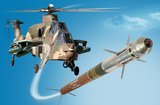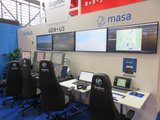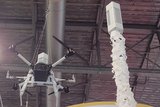How commercial tech is reshaping military requirements
A US airman uses a VR maintenance training system for the MC-130J Commando II. (Photo: Air National Guard)
Commercial solutions have been reshaping armed forces’ requirements across development and acquisition programmes. Moreover, recent conflicts have shown that dual-use systems will play a major role on tomorrow’s battlefields.
This type of technology can provide distinct advantages in high-intensity scenarios, such as better and more secure communications, improved situational awareness and quicker target location and engagement.
Such solutions can also provide greater effectiveness, accelerating the decision-making process, improving training and easing logistics efforts.
Speaking to Shephard, Joel Dillon, SVP and leader in Booz Allen Hamilton’s Global Defence Business explained that new commercial technologies are emerging and rapidly being injected into military forces
Already have an account? Log in
Want to keep reading this article?
More from Eurosatory 2024 | View all news
-
![India expands ammunition production with Adani–Thales collaboration]()
India expands ammunition production with Adani–Thales collaboration
Adani Defence & Aerospace has teamed up with Thales Belgium to manufacture and assemble NATO-standard 70mm calibre ammunition, strengthening India's self-reliance in defence production.
-
![Naval artificial intelligence demonstrated in new applications in Paris]()
Naval artificial intelligence demonstrated in new applications in Paris
The prevalence of AI-enabled solutions from startups and major defence company at this year’s Eurosatory highlighted both the potential benefits and trust-related challenges associated with its adoption.
-
![Thales completes delivery of upgraded command and staff trainer to Polish Land Forces]()
Thales completes delivery of upgraded command and staff trainer to Polish Land Forces
Thales unveiled its CAST system at Eurosatory 2024 showcasing its advanced capabilities in enhancing situational awareness and decision-making skills.
-
Sogitec combines Sword, Genius and HORUS for virtual/constructive demonstrator
The French company has integrated its Genius UAS and HORUS helicopter simulators with MASA’s Sword constructive simulation as it aims to achieve operational orders by the end of 2025.
-
![Saab releases details on Sirius Compact EW sensor]()
Saab releases details on Sirius Compact EW sensor
Sirius Compact can be operated as a stand-alone unit or as part of a network with several sensors typically supporting Ground Based Air Defence with target information.
-
![Thales takes new HF communications system from ship to shore]()
Thales takes new HF communications system from ship to shore
The HF XL family was unveiled at last month’s Eurosatory 2024 with the company pushing the system’s capability of searching out unjammed channels or channels with the highest data rate available.

























